| Bennett Observing Program Coordinator: Rob Lentini 4103 Casey Court Alexandria, VA 22306 703-244-5390 rlentini1@verizon.net |
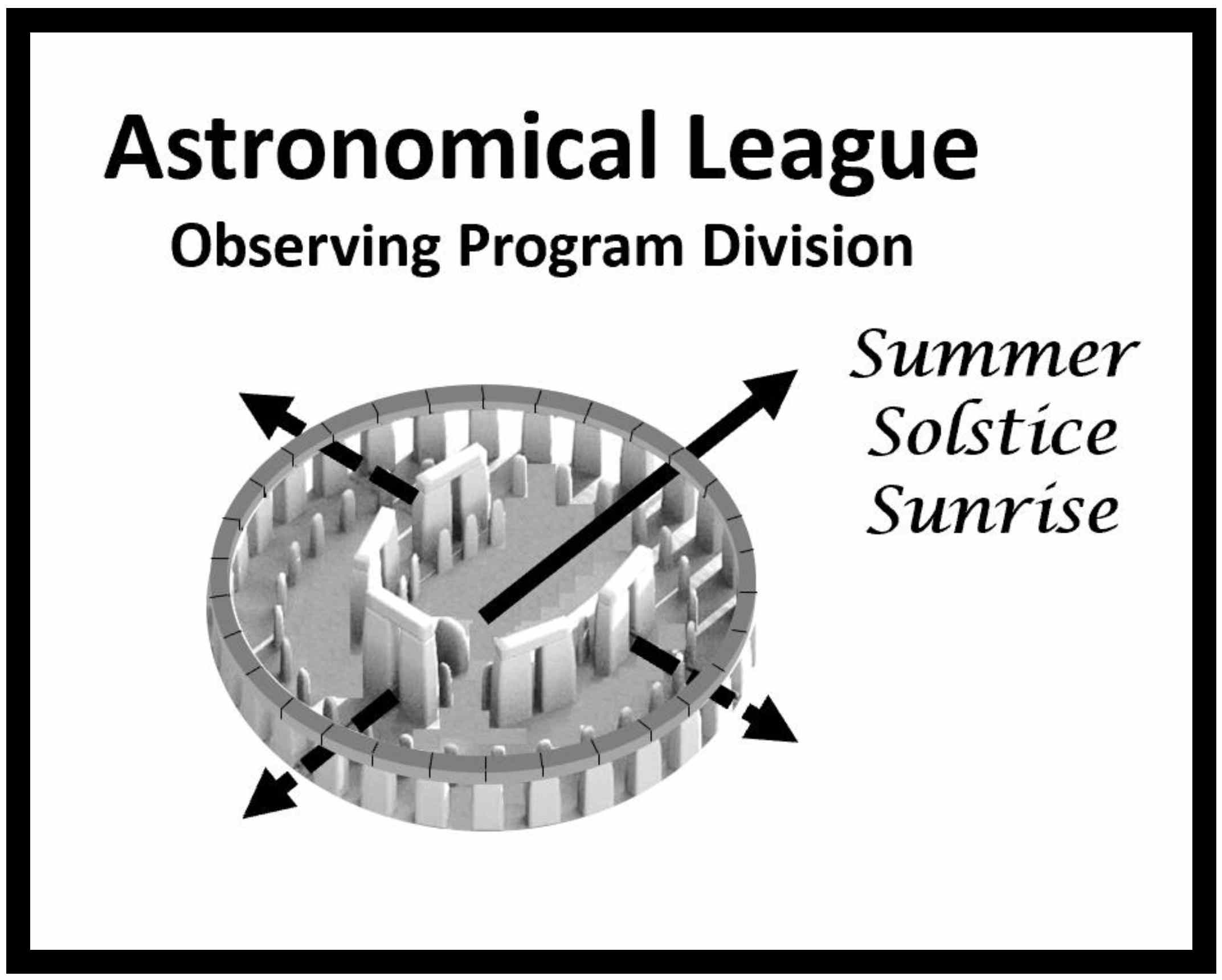 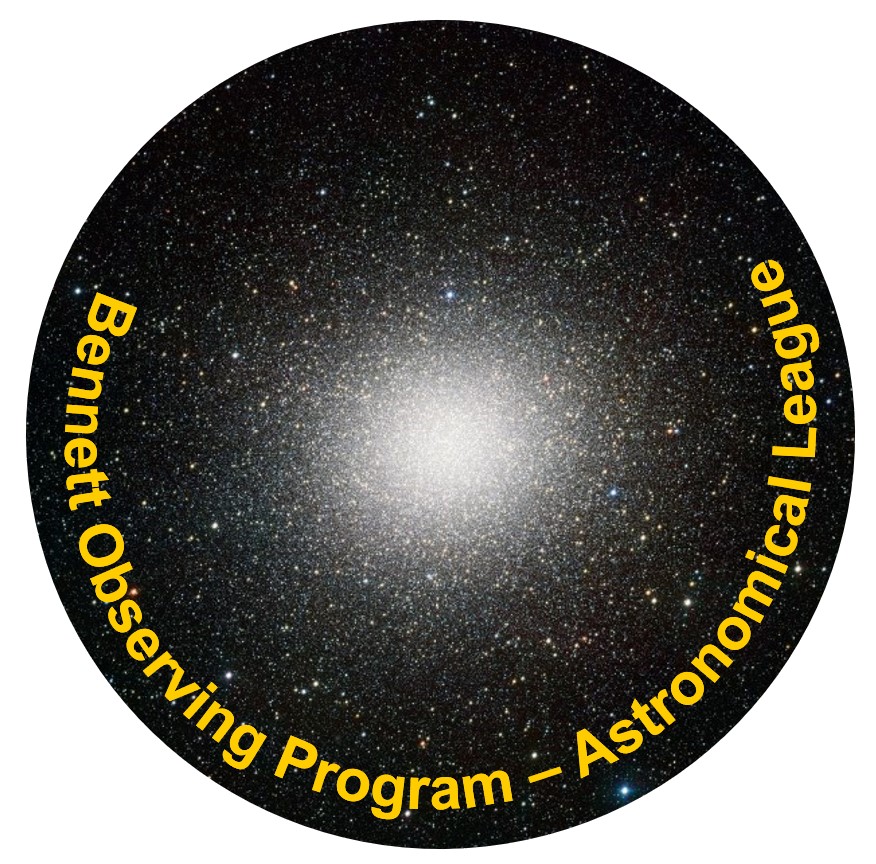 |
IntroductionThe Bennett Catalog is the southern skies equivalent of the Messier Catalog for the northern latitudes. Of the myriads of star clusters and nebulae scattered over the sky only about 152 can claim membership to this list. However, this happens to include most, but not quite all, of the finest objects observable from southern latitudes. 107 of these objects have been selected to be included in the Astronomical League’s Bennett Observing Program. The catalog contains objects that the owner of a six-inch reflector should be able to observe under good observing conditions. Some of the objects can be seen with binoculars. Thus, the Bennett Catalog is a happy hunting ground for any amateur with a taste for deep sky objects. Background InformationJack Bennett (April 6th, 1914 – May 30th, 1990) was a South African astronomer who developed an intense interest in comet hunting. He was a member and past president of the Astronomical Society of Southern Africa. For more information on Jack Bennett and the Astronomical Society of Southern Africa, visit their website: http://assa.saao.ac.za/sections/deep-sky/jack-bennett-catalogue/ |
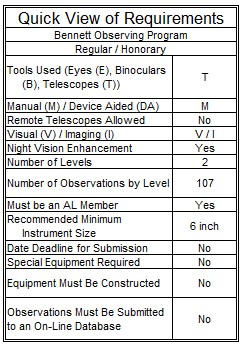 |
In the same spirit as Charles Messier, Bennett created a list of southern sky objects that appeared like comets in his telescope; objects to be avoided in his search for comets. Initially published in 1969, it was updated in 1974. Also, like Messier, Bennett did not discover many of the objects on his list.
Bennett’s list is a catalog of Southern deep sky gems. It includes many famous objects such as the Tarantula Nebula, Omega Centauri, and the Sombrero Galaxy. The complete list contains 72 globular clusters, 46 galaxies, 22 open clusters, 9 planetary nebulae, and 3 bright nebulae. All of the objects have a declination below the celestial equator. The southernmost object is at declination –72° 40’.
Requirements and Rules
This certification is available to members of the Astronomical League, either through their local astronomical society or as members at large. If you are not a member and would like to become one, check with your local astronomical society, search for a local society on the Astronomical League Website, or join as a Member-at-Large .
The Astronomical League offers special recognition in the form of a Bennett Observing Program certificate and pin for those who have observed the required 107 of the Bennett objects. There are two levels of this certification 107 objects (certificate and pin) and the complete level: all 152 objects (additional certificate only). To obtain certification you must follow these rules:
Rule 1:
Visually observe the required 107 Bennett objects and keep a record of your observations. Your notes must include:
- Date and Time of observations (local time or UT)
- Latitude and Longitude of Observations
- Seeing and Transparency
- The Aperture size of the telescope
- Power used
- A description of the Bennett object as it appears in the eyepiece.
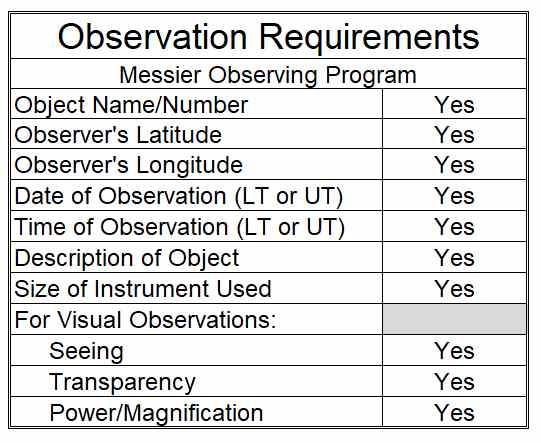
Rule 2:Have your observing log examined by an officer of your Astronomical Society or a suitably qualified second party. (If you are not a member of a society you may send a copy of your logs to the Bennett Observing Program Coordinator directly.) After reviewing and approving your observations that member of your society should forward a letter or email stating that you have completed the required observations. Be sure to include your name, mailing address, email address, phone number, and society affiliation. This letter should be addressed to the Bennett Observing Program Coordinator. |
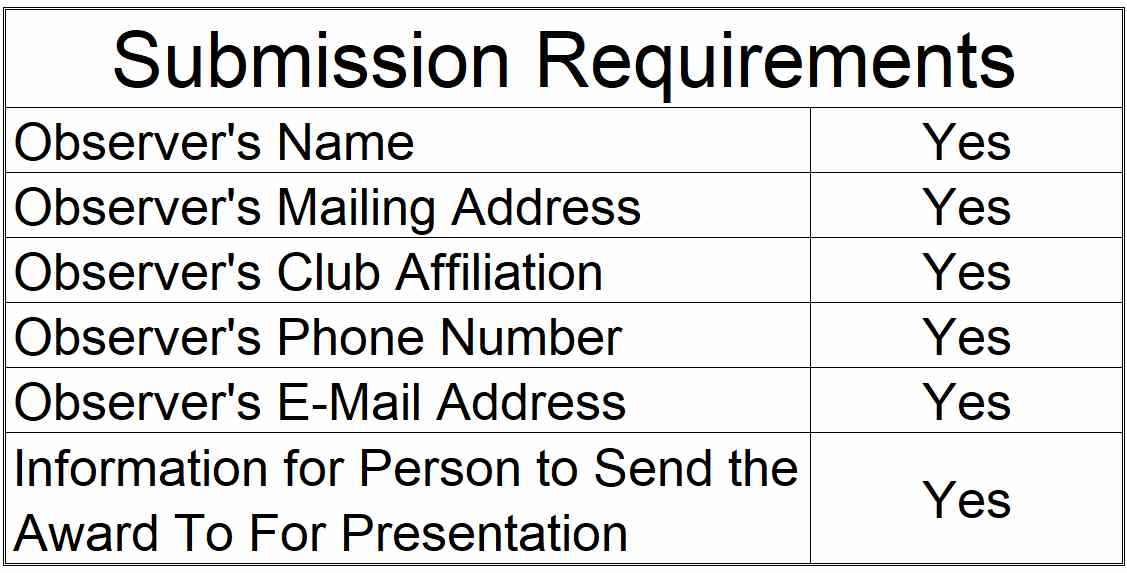 |
Only non-society members need to actually mail their observing log to the Bennett Observing Program Coordinator. The letter should specify the address to which the certification should be mailed. The certificate will be suitable for framing.
Rule 3:
To complete the Complete Bennett Observing Program, when you have observed the entire list (152) of the Bennett Objects, your logbook should be examined again and a letter or email forwarded to the Bennett Observing Program Coordinator again, indicating that you have completed the observations of the complete Bennett Catalog. You will receive a second certificate signed by the current President of the Astronomical League. Be sure to indicate the return address.
Note:
Since the purpose of the Bennett Observing Program is to familiarize the observer with the nature and location of the objects in the sky, the use of an automated telescope which finds the objects without effort on the part of the observer is not acceptable. “Automated telescope” also includes the use of digital setting circles where a read-out shows the user directions to follow to locate an object. This also includes the unacceptable use of smartphones that use apps to locate objects in the night sky. The use of the setting circles found on the axis of the telescope should also be avoided. In short, only finder scopes, Telrads, or Telrad-like devices are acceptable.
The purpose of the “no Go-To” rule is so that you learn the sky and learn how to associate a map with the real sky to learn how to get from here to there without the electronics or the scales. Learn to locate objects without the electronic interface. The knowledge of being able to perform this will always be a benefit in the future. Take your time, enjoy yourself, and REALLY see the objects as they were meant to be seen.
Rule 4:
This program is meant to be completed using a telescope where multiple magnifications (including a higher power) and filters (if available) can be used. Observations done as part of other Astronomical League Observing Programs may be included here if they were attained manually.
Submitting for Certification
Bennett Observing Program Coordinator:
Rob Lentini
4103 Casey Court
Alexandria, VA 22306
703-244-5390
rlentini1@verizon.net
Upon verification of your submission and of your active membership in the Astronomical League, your recognition (certificate, pin, etc.) will be sent to you or to the awards coordinator for your society, as you specified. Your name will also appear in an upcoming issue of the Reflector magazine and in the Astronomical League’s online database. Congratulations. Good luck with your next observing challenge.



